How a two-piece drawn and wall-ironed food can is made
二片金属冲拔罐的制造
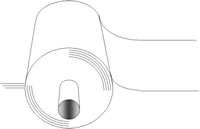 1. Aluminium or steel strip arrives at the can manufacturing plant in large coils.
1. Aluminium or steel strip arrives at the can manufacturing plant in large coils.铝或钢板以大卷的形式运到制罐厂
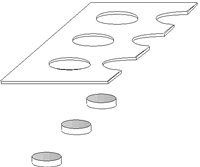 2. The strip is lubricated with a thin film of liquid and then fed continuously through a cupping press, which blanks and draws thousands of shallow cups every minute.
2. The strip is lubricated with a thin film of liquid and then fed continuously through a cupping press, which blanks and draws thousands of shallow cups every minute. 金属片经过一层薄薄的液体膜润滑然后进入连续冲拔机,每分钟冲拔出数千只金属浅杯
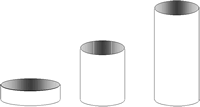 3. Each cup is rammed through a series of tungsten carbide rings. This is the drawing and ironing process which redraws the cup to a smaller diameter and thins the walls, whilst increasing the height.
3. Each cup is rammed through a series of tungsten carbide rings. This is the drawing and ironing process which redraws the cup to a smaller diameter and thins the walls, whilst increasing the height. 每只杯再经过一系列碳化钨环的冲压。这是拉伸和碾平杯壁的过程,以形成更细的直径、更薄的壁和增加罐子的高度
 4. Trimmers remove the surplus irregular edge and cut each can to a precise specified height. The surplus material is recycled.
4. Trimmers remove the surplus irregular edge and cut each can to a precise specified height. The surplus material is recycled.整理机去除多余的飞边,并把杯子精确地切成要求的高度,多余的材料被回收
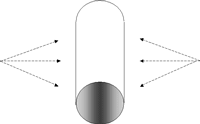 5. The trimmed can bodies are passed through highly efficient washers and then dried. This removes all traces of lubricant in preparation for coating internally and externally.
5. The trimmed can bodies are passed through highly efficient washers and then dried. This removes all traces of lubricant in preparation for coating internally and externally.
整理过的罐身经过高速清洗机并干燥。这一步骤是为了去掉润滑液残留为内外涂层做准备
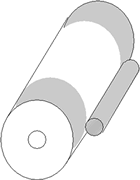 6. The cans are coated externally by passing them under a waterfall of clear lacquer which protects the surface against corrosion.
6. The cans are coated externally by passing them under a waterfall of clear lacquer which protects the surface against corrosion.罐子通过一个瀑布似的清漆喷雾进行外涂层,以达到防锈的目的
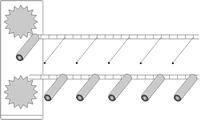 7. Lacquered external surfaces are dried in an oven
7. Lacquered external surfaces are dried in an oven罐外的漆膜通过烘箱干燥
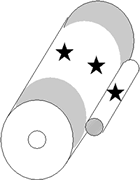 8. The cans are passed through a flanger, where the tops of the cans are flanged outwards to accept the ends after the cans have been filled.
8. The cans are passed through a flanger, where the tops of the cans are flanged outwards to accept the ends after the cans have been filled.罐子通过一个刮板形成顶部折边,以便罐装后与罐底封合
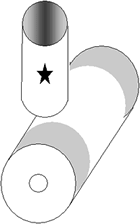 9. The cans are passed through a beader, where the walls of the cans have circumferential beads formed in them to give added strength.
9. The cans are passed through a beader, where the walls of the cans have circumferential beads formed in them to give added strength.
罐子通过卷边器在罐壁上加筋以加强罐体的强度
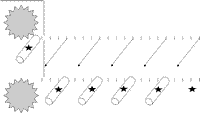 10. Every can is tested at each stage of manufacture. At the final stage they pass through a light tester which automatically rejects any cans with pinholes or fractures.
10. Every can is tested at each stage of manufacture. At the final stage they pass through a light tester which automatically rejects any cans with pinholes or fractures. 每个罐子都经过制造高的检测。最后罐子通过一个光学检测器可以自动剔除有针孔或爆裂的罐子
 11. The inside of each can is sprayed with lacquer.
11. The inside of each can is sprayed with lacquer.
This special lacquer is to protect the can itself from corrosion and from any possibility of interaction between the contents and the metal.
每个罐子的内部都喷一种清漆。这种特殊的涂层是为了防锈以及防止内容物对金属材料的腐蚀
 12. Lacquered internal surfaces are dried in an oven.
12. Lacquered internal surfaces are dried in an oven. 内层漆膜通过一个烘道干燥
 13. The finished can bodies are then transferred to the warehouse to be automatically palletised before despatch to the filling plant.
13. The finished can bodies are then transferred to the warehouse to be automatically palletised before despatch to the filling plant.完成的罐身运到仓库并自动码垛等待送入灌装




